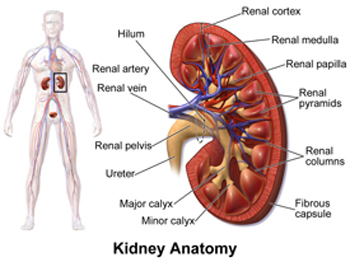Diagnosing Wilms Tumor and Other Kidney Tumors

Wilms tumor is the most common type of kidney tumor in children, representing about 85% of diagnoses. The second most common kidney tumor is clear cell sarcoma of the kidney (CCSK). Other less common kidney tumors include renal cell carcinoma, malignant rhabdoid tumor, and congenital mesoblastic nephroma. It is important for doctors to correctly identify which tumor your child has, because each tumor is treated differently.
Typically, cases of Wilms tumor are not diagnosed until the tumor becomes quite large. Fortunately, most tumors are discovered before they metastasize (spread to other organs in the body). As with many cancers, the tumor mass can become quite large; the average weight of a newly discovered tumor is about 500 grams (one pound), which is larger than the normal kidney.
In addition to a complete medical history and physical examination, diagnostic tests are performed to evaluate the kidney tumor and look for signs of spread to other areas of the body.
- Laboratory Tests: Certain blood tests are done to count the number of white blood cells, to look for anemia (low number of red blood cells) and to measure certain chemicals and salts in the blood that give clues about how well the kidneys are working
- Urinalysis: A urine sample is examined using various testing methods for the presence of blood and other substances
- Imaging studies: Many technologies are available to get a clear picture of the tumor and surrounding structures, these include:
These tests also enable the treating doctors and surgeons to select the best approach for treatment because they show where the tumor is located. The diagnosis is usually confirmed by the surgical removal of all or part of the tumor when a pathologist examines it under a microscope. In some cases, treatment with chemotherapy will be started to shrink the tumor initially and make removal safer and more effective at a later time.

